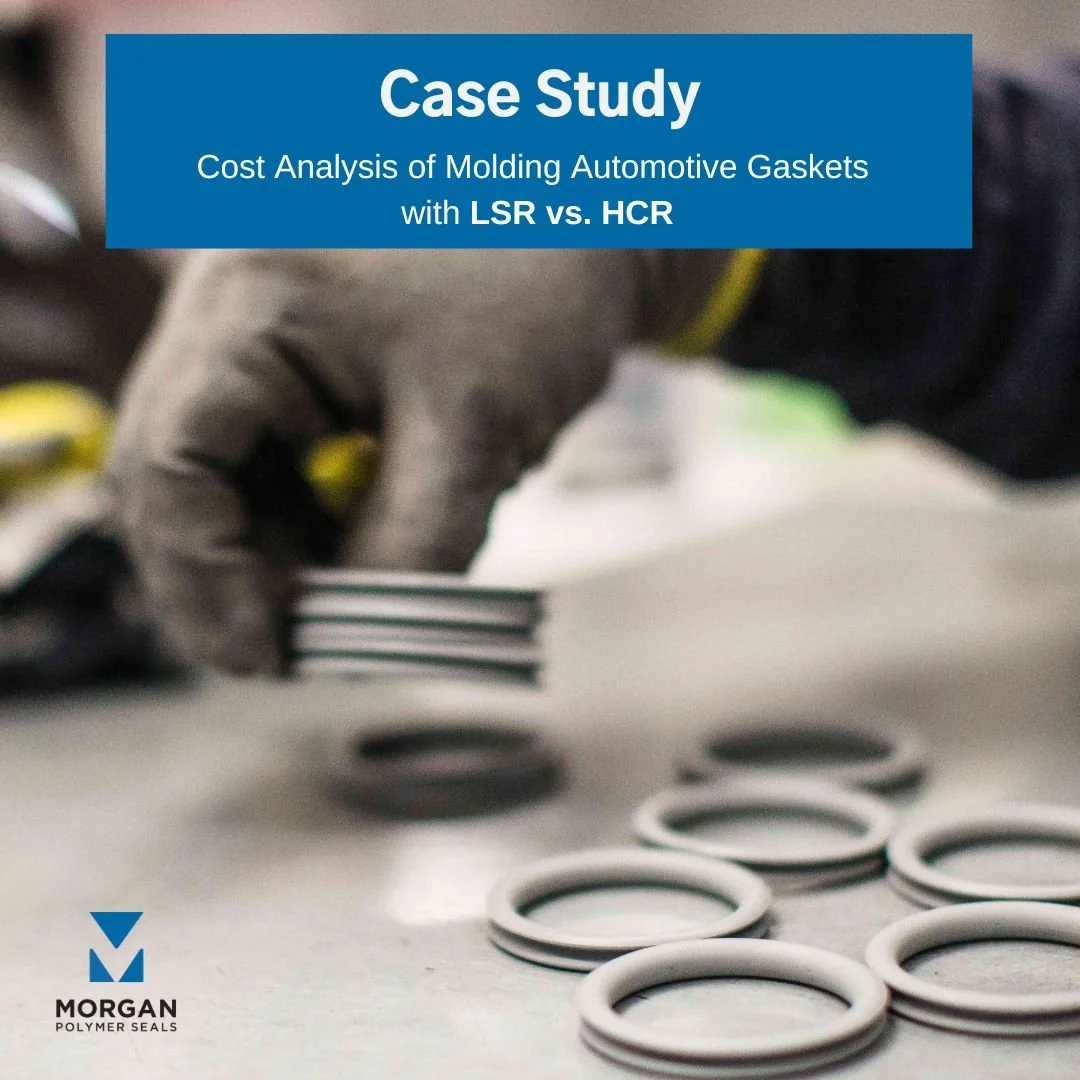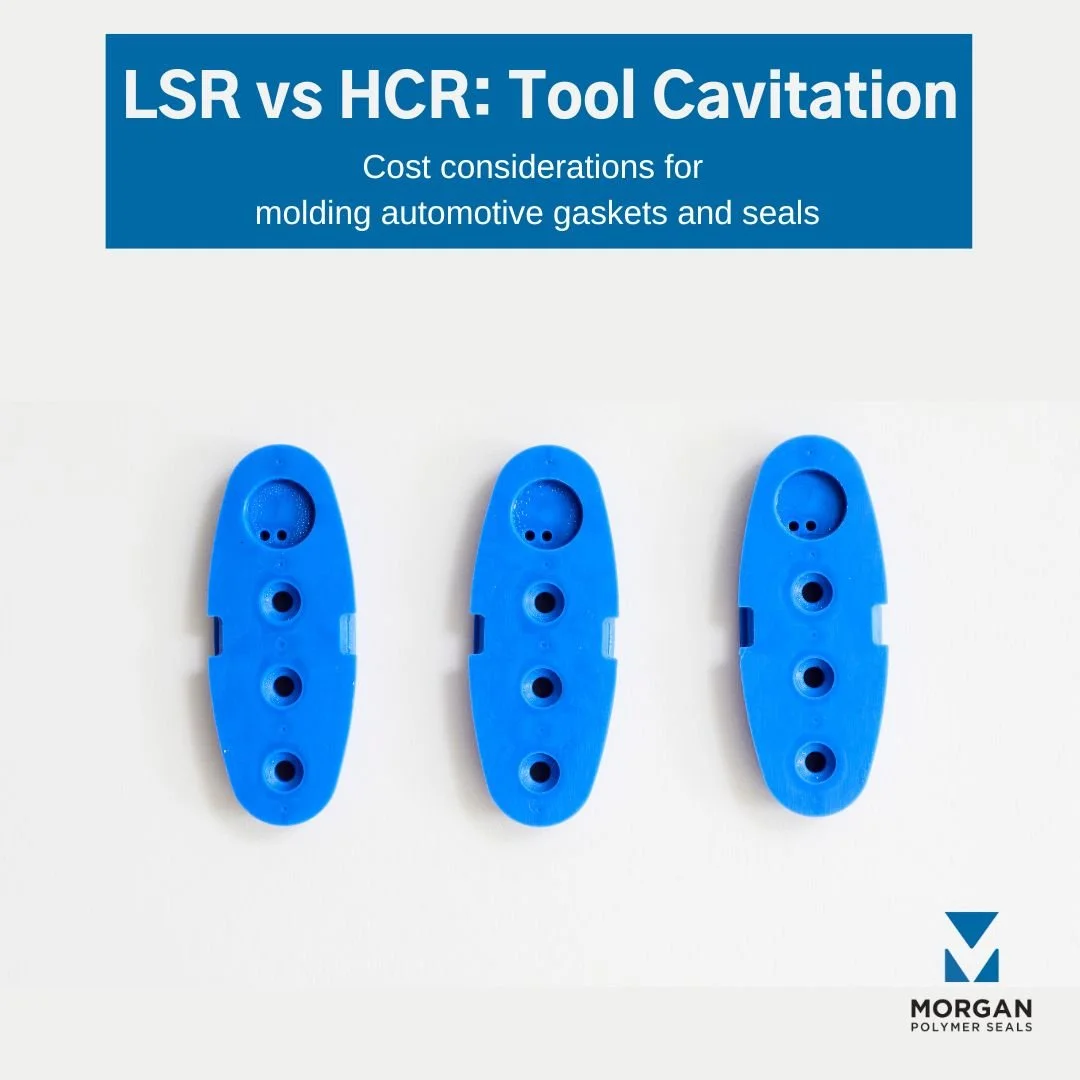This gallery is features (even more) seals made with self-lubricating high-consistency rubber silicone (HCR).
Read MoreSelf-lubricating (or Self-Bleeding or Oil-Impregnated) silicones are very helpful for seals that require reduced friction for various reasons.
Read MoreHow does the tear strength performance of LSR compare to an HCR silicone? Let’s take a look.
Read MoreFor manufacturing overmolded automotive gaskets and seals, Liquid Silicone Rubber (LSR) is generally preferred over High Consistency Rubber (HCR). LSR’s optimal performance for overmolding is based on several key factors.
Read MoreFor molding automotive gaskets, both LSR and HCR both have distinct processing characteristics that influence production costs. Let’s look at some scenarios to illustrate how we might choose the ideal material for manufacturing various electrical connectors in Mexico.
Read MoreLSR (Liquid Silicone Rubber) tools typically have fewer cavities and higher upfront costs compared to tools for HCR (High Consistency Rubber), but what are the other considerations for this process versus compression molding?
Read MoreLiquid Silicone Rubber (LSR) generally has faster cycle times in molding processes than High-Consistency Rubber (HCR), but that doesn’t always make LSR the preferred choice for molding automotive gaskets and seals. In this article, we explore why LSR cycle times are typically faster, and how faster cycle times can help reduce manufacturing costs for some automotive programs.
Read MoreIn addition to Silicone (VMQ), two materials commonly employed for molding electrical connectors are Liquid Silicone Rubber (LSR) and Heat Cured Rubber (HCR). This article explores the notable qualities of LSR and HCR and their respective uses in automotive gasket manufacturing.
Read More




